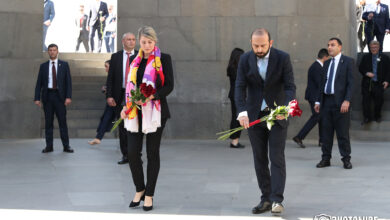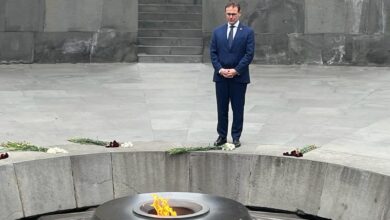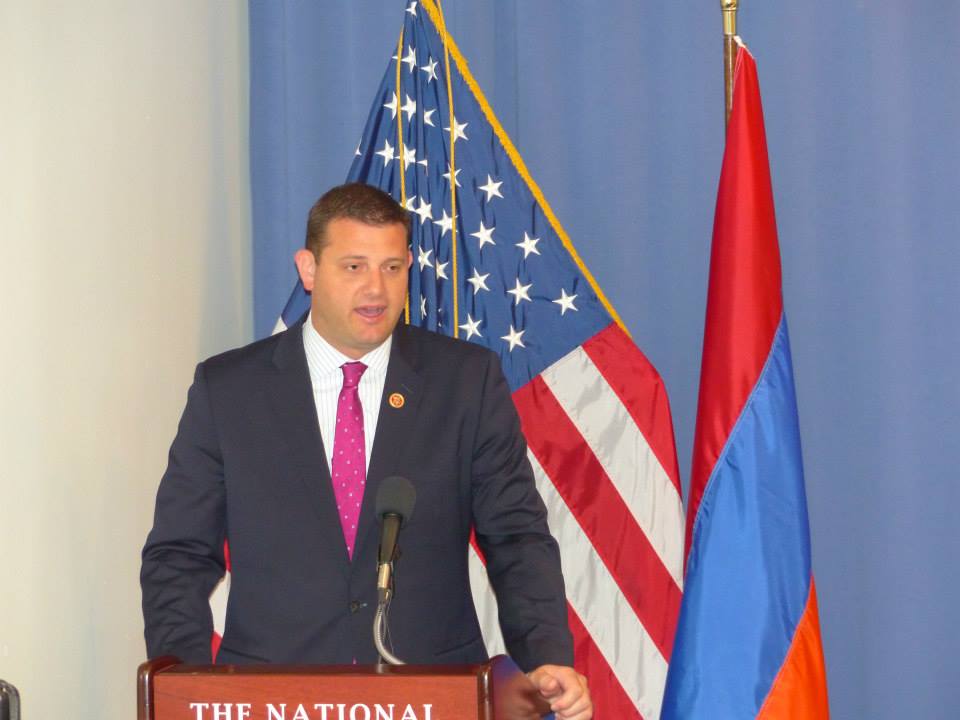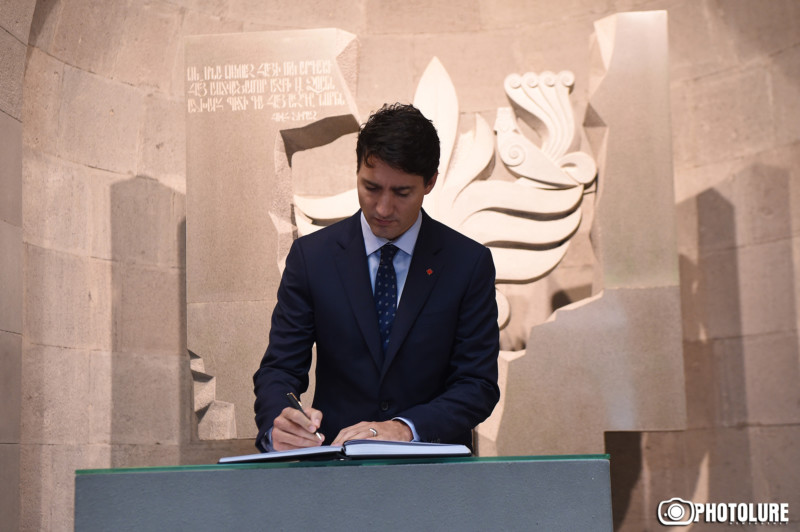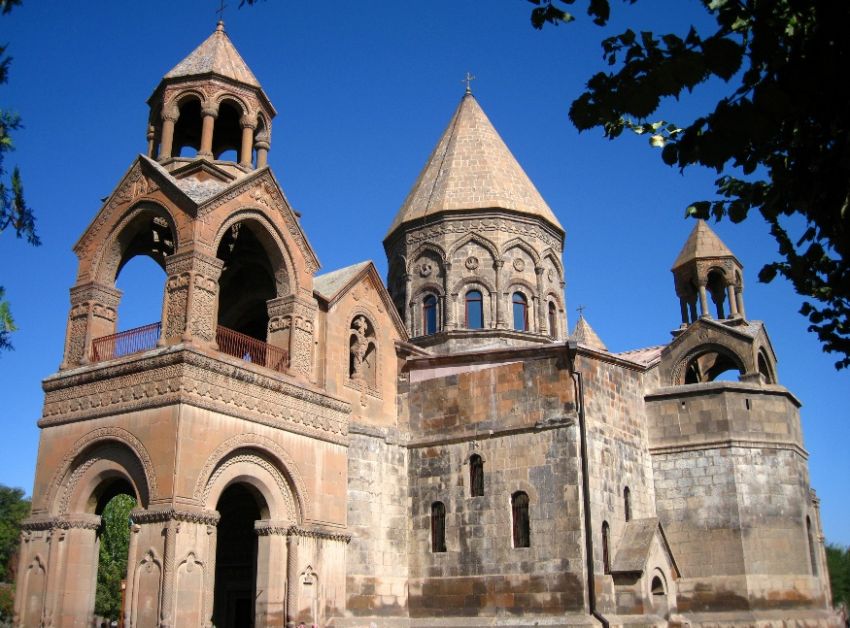
The Armenian National Institute (ANI), Armenian Genocide Museum of America (AGMA) and Armenian Assembly of America (Assembly) jointly, and in cooperation with the Mother See of Holy Echmiadzin, the Armenian Genocide Museum-Institute in Yerevan and the Republic of Armenia National Archives, announced the release of a major exhibit consisting of 20 panels with over 150 historic photographs documenting the role of the Armenian Church during the Armenian Genocide, the Armenian Mirror-Spectator reports.
Titled “The First Refuge and the Last Defense: The Armenian Church, Etchmiadzin, and The Armenian Genocide,” the exhibit explains the importance of the Mother See of Holy Echmiadzin during the Armenian Genocide. It also examines the vital leadership role played by the clergy during the Armenian Genocide, especially the all-important intervention of Catholicos Gevorg V Sureniants in alerting world leaders about the massacres, effectively issuing the first “early warning” of an impending genocide.
The sacrifices of the Armenian clergy are well documented. Thousands, among them several primates in Western Armenia and other parts of the Ottoman Empire, paid the price of martyrdom for their faith during the Armenian Genocide. Far less well known is the extent to which the Armenian Church in Eastern Armenia, then under Russian rule, came to the assistance of the Armenian people in its hour of plight.
The exhibit provides ample evidence of the aid extended by fellow Armenians to the refugees fleeing Ottoman Turkey as the Young Turk regime pursued its path toward the destruction of the Armenians. It is now almost forgotten that the first people to come to the aid of the fleeing and starving were Armenians across the Russian-Turkish border who welcomed their countrymen into their homes and threw open the doors to their schools, hospitals, and other facilities to house, care, and feed the hungry, the sick and the homeless.
At the epicenter of this outpouring of aid was Echmiadzin, the primary destination of the Armenians fleeing the massacres along the border regions of the Ottoman Empire, especially as a result of the great exodus of the Armenian population of Van. They had dared resist extermination only to find themselves abandoning their homeland, when the Russian forces that arrived to deliver them shortly thereafter retreated. After the slaughter of 55,000 Armenians in Van province alone in April 1915, the survivors, 100,000 in all, concentrated in the city of Van, were left with no choice other than exile. As armed Turkish and Kurdish bands pursued them every mile of their trek across the rugged landscape of mountains, valleys, and rivers cutting through gorges, the exodus turned into the road of massacres.
With testimony from survivors and witnesses, the exhibit reconstructs this particular chapter of the Armenian Genocide, a chapter often overlooked in the context of the mass deportations of the Armenians from all across Ottoman Turkey to the interior of the Syrian desert where hundreds of thousands perished from hunger, thirst, and slaughter. The episode in Van was no less tragic as the death toll was no less ferocious even after thousands seemingly reached safety only to die of exhaustion, fright, starvation, and raging epidemics as the resources in Eastern Armenia were quickly overwhelmed and Echmiadzin transformed overnight into a vast and fetid refugee camp.
With three maps, 12 historic documents and news clippings, as well as 16 survivor testimonies specific to the details of the events documented with over 150 photographs, the exhibit reconstructs the Armenian Genocide in a single region of historic Armenia and reveals how the people of Eastern Armenia became aware of the policies of the Young Turks during World War I. The exhibit combines images retrieved from archives and repositories in Armenia and America and connects them together in this first extensive narrative exhibit on the Armenian Genocide.
These dramatic pictures highlight the role of the Mother See of Holy Etchmiadzin during the critical years of 1915 and 1916. They also explain the invaluable national role of Armenian church leaders as exemplified by four of its outstanding catholicoses, namely Mkrtich I Khrimian, Gevorg V Sureniants, Khoren I Muratbekian, and Garegin I Hovsepiants, the first three, Catholicos of All Armenians and the fourth, Catholicos of the Great House of Cilicia.
The exhibit also explores the role of the laity in responding to the appeals of the Armenian Church and reveals how the Eastern Armenian intelligentsia, as represented by figures such as Hovhannes Tumanian, the most prominent writer of his era, and the famed artist Martiros Sarian, closely cooperated with the Mother See in order to assist the Western Armenian refugees.
Numerous other important figures are also represented through photographs and testimony in the exhibit, including United States President Woodrow Wilson, U.S. Secretary of State William Jennings Bryan, American missionary in Van Dr. Clarence D. Ussher, Prince Argoudinsky-Dolgoroukov, Komitas, Alexander Khatisian, Aghassi Khanjian and General Andranik Ozanian.




